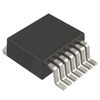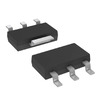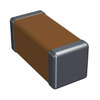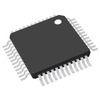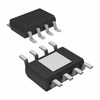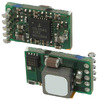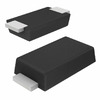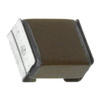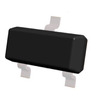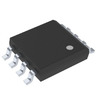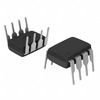What Is An LR44 Battery?
Electricity, that ubiquitous force, quietly permeates every aspect of our daily lives, from trivial gadgets to life-threatening medical equipment, it plays a silent role. However, truly grasping this energy, especially how to store and efficiently output it, is no easy task. It is against this background that this article will focus on a type of coin cell battery that may seem insignificant on the surface but is extremely versatile in practical applications, namely the LR44 battery. The article will provide a comprehensive technical overview, including detailed specifications, comparisons with other battery models such as the 357 battery, and use cases in a variety of specific applications, including but not limited to medical and recreational products. To put it simply and concisely, our goal is to enable you to make a more informed and comprehensive choice when faced with purchasing or application decisions through a comprehensive and in-depth comparison and analysis.
Catalog
1. In-Depth Analysis of LR44 Battery: A Unique Fusion of Complexity and Application
2. In-Depth Analysis of Technical Specifications: Performance and Environmental Factors of LR44 Battery
3. Characteristics and Voltage: Microscopic Exploration of Multiple Performance Indicators
4. Examine the Application of LR44 Batteries In Various Fields from Multiple Perspectives: Household Electronics and Medical Equipment Are Just the Starting Point
5. Equivalent and Alternative Solution Paths: Multi-Level Options for LR44 Batteries
6. Comparative Analysis of LR44 and 357 Batteries: A Multi-Dimensional Perspective of Fine Observation and Practical Application
7. The Essence of Origin and Craftsmanship: The Comprehensive Advantages of Murata Manufacturing Emerge
8. Conclusion
1. In-Depth Analysis of LR44 Battery: A Unique Fusion of Complexity and Application
2. In-Depth Analysis of Technical Specifications: Performance and Environmental Factors of LR44 Battery
3. Characteristics and Voltage: Microscopic Exploration of Multiple Performance Indicators
4. Examine the Application of LR44 Batteries In Various Fields from Multiple Perspectives: Household Electronics and Medical Equipment Are Just the Starting Point
5. Equivalent and Alternative Solution Paths: Multi-Level Options for LR44 Batteries
6. Comparative Analysis of LR44 and 357 Batteries: A Multi-Dimensional Perspective of Fine Observation and Practical Application
7. The Essence of Origin and Craftsmanship: The Comprehensive Advantages of Murata Manufacturing Emerge
8. Conclusion
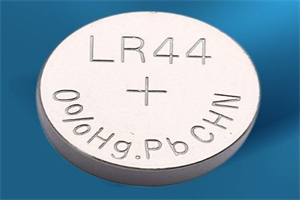
Figure 1: LR44 Battery
In-Depth Analysis of LR44 Battery: A Unique Fusion of Complexity and Application
LR44 batteries, a category of button batteries, are widely used in contemporary society not only because of their compact and easy-to-carry appearance but also due to their excellent technical specifications and superb engineering design. It is quite common in products such as children's toys, adult watches, and high-precision calculators. However, this kind of button battery, which is very common in daily life, has a series of complex scientific and engineering problems hidden behind it.
The volume design of the LR44 battery allows it to easily fit into a variety of size-restricted devices. Its specific dimensions are 11.6 mm in diameter and 5.4 mm in height. LR44 batteries generally operate at a voltage of 1.5 volts. This value does not come out of thin air but is determined as the optimal operating voltage after multiple rounds of careful calculations and experimental data verification.
Similar to many battery types, LR44 also has an optimal operating temperature range, usually around 20°C. The selection of this value is not random or arbitrary but is based on electrochemical and materials science principles. In this temperature environment, chemical reactions within the battery reach a certain steady state, which helps maximize electrical energy output and extend service life.
The reliability and versatility of LR44 batteries make them useful in many ways. Taking the medical field as an example, the battery is used to power portable hearing aids and blood glucose measuring instruments. On these specific devices, battery durability and stable output are considered priority concerns. In addition, its small size and high energy density are also popular in consumer electronics products such as smartwatches and remote control toys.
When exploring operating temperature, it is important to emphasize that different uses or situations may have different regulations on battery operating temperature. For example, in outdoor sports equipment applications, batteries need to be able to maintain stable operation over a wider temperature range. Solving this problem requires developers to adopt more complex chemical composition and structural strategies during the battery design stage to adapt to various temperature changes.

Figure 2: LR44 Battery
The reason why LR44 batteries can be commonly used in different scenarios in daily life is that every aspect of it, whether it is size design, working voltage selection, or temperature adaptability, has been rigorously planned and tested to adapt to a variety of different situations. Practical application requirements.
In-Depth Analysis of Technical Specifications: Performance and Environmental Factors of LR44 Battery
The LR44 battery is not just a simple energy storage device, it is actually a highly complex integrated system that covers many aspects of engineering, material science, and even environmental adaptability. These different data indicators are not isolated individuals, but coexist in an intertwined and mutually influencing network, shaping the comprehensive performance of the battery in various application environments.
Taking the average working capacity of 120mAh as a starting point, this indicator undoubtedly outlines a clear boundary for the battery's application range. Take medical equipment as an example, especially those portable electrocardiographs. They not only need to work continuously for a long time but also require the accuracy and stability of the current output. In this situation, LR44 batteries naturally become the first choice due to their robust working capacity.

Figure 3: LR44 Battery
The structure of the flat contact end, this seemingly unimportant detail, actually has a significance that cannot be ignored in terms of the stability and reliability of the current transmission. Taking modern smart headphones as a scenario, this design allows the battery to provide a continuous and efficient power supply even in an extremely small physical space.
Speaking of rated capacity, especially at a temperature of 23°C and a resistance of 4.7k ohms, this indicator is more like a dynamic balance result, reflecting how battery performance is restricted by the external environment. For example, when the temperature fluctuates up and down, the speed of internal chemical reactions is likely to change, which indirectly affects the battery's working capacity and expected service life. Similarly, when the resistance changes, the current output will be affected accordingly. This phenomenon is especially obvious when electronic equipment is used at high altitudes or in cold environments.
In this way, we have a deeper understanding of the multi-faceted technical specifications and environmental adaptability of LR44 batteries. From operating capacity to contact design to environmental considerations, these seemingly disparate details are a synthesis of engineering and materials science wisdom, brought together under a common goal: to build a high-performance, adaptable battery.
Characteristics and Voltage: Microscopic Exploration of Multiple Performance Indicators
Considering the multi-dimensional characteristics of LR44 battery performance, it actually involves a series of delicate and complex voltage and characteristic parameters. Its open circuit voltage (Open Circuit Voltage, OCV) is maintained at a relatively stable 1.50 volts under a standard environment, but it is worth noting that when the external conditions approach extremes, such as the temperature plummeting to -10°C, and the load reaches 200 ohms/5 seconds, its closed circuit voltage (Closed Circuit Voltage, CCV) may drop sharply to 1.10 volts.

Figure 4: LR44 Battery
This voltage fluctuation cannot be underestimated in practical applications. Take outdoor adventure equipment as a scenario, which may include components such as navigation systems or emergency lights. These devices have a high probability of use in low-temperature environments. When this voltage drop occurs, the device may face certain performance limitations, but the point is that since the battery stabilizes at around 1.10 volts, basic functionality is maintained.
Then, the nominal voltage of this battery is 1.5 volts, but it should be emphasized that its cut-off voltage—the voltage at which the battery energy is almost exhausted—is generally in the range of 0.9 to 1.0 volts. Fluctuations in this voltage range naturally lead to discussions about the suitability of batteries for a wide variety of devices. Consider the scenario of digital cameras. Many modern models trigger an automatic shutdown mechanism after the battery voltage drops to a certain level to ensure the safety of the internal circuitry. Therefore, a thorough understanding of a battery's cutoff voltage becomes particularly important during the battery selection process.
By conducting a precise analysis of the multi-dimensional voltage and characteristic parameters of the LR44 battery, it is possible for us to more accurately evaluate the performance of this battery in various application scenarios. From the stability of open-circuit voltage to the fluctuation of closed-circuit voltage in extreme environments, and even the impact of cut-off voltage on device compatibility, all these factors form a panoramic picture of battery performance and application range. They not only reflect the maturity of battery technology but also provide us with a key decision-making basis in the battery selection process.
Examine the Application of LR44 Batteries In Various Fields from Multiple Perspectives: Household Electronics and Medical Equipment Are Just the Starting Point
The breadth of applications for LR44 batteries is truly extraordinary, covering multiple usage scenarios from children's toys to home electronics such as remote controls and alarm clocks, but also going far beyond these surface appearances.
Perhaps unexpectedly for most people, LR44 batteries also have a place in medical applications. Particularly compelling applications include insulin pumps and personalized drug delivery systems. In such a critical medical environment, battery reliability is no small matter. Consider an insulin pump, a device that must deliver insulin in a continuous and precise manner to diabetics, where even minor power instabilities can trigger serious health consequences.

Figure 5: LR44 Battery Application Scenarios
LR44 batteries are not only used in medical equipment but are also widely used in a variety of measurement tools that require accuracy, including but not limited to electronic thermometers and advanced scientific calculators. In the context of such applications, the stable output and long-lasting performance of the battery are indisputable priorities. Such as laboratories and research institutions, which not only use this battery to drive electronic thermometers for precise temperature monitoring but also have strict evaluation standards for battery performance.
The complexity and diversity of application scenarios make the LR44 battery not only a "universal battery", but also an option that can provide robust and reliable power support in multiple application scenarios. From daily household needs to medical situations involving life safety, to precision measurement tools, this battery has demonstrated its unique value and reliability.
Equivalent and Alternative Solution Paths: Multi-Level Options for LR44 Batteries
LR44 batteries provide a wealth of equivalent and alternative options, further empowering users to make more flexible decisions in different application scenarios. You may be familiar with models such as AG13, L1154, LR1154, and 157. Not only are the voltages and sizes similar, but these options also have quite a few similarities in performance.
To further elaborate, these equivalent batteries can be mainly divided into two types: alkaline and silver oxide. For those eyeing silver oxide batteries as a viable alternative to LR44, models such as the SR44, SR44SW, 303, and 357 are ones you shouldn't easily overlook. These batteries generally have a longer life and more robust voltage output, although this usually means higher cost.
At the level of practical applications, choosing equivalent or alternative batteries requires caution, especially considering battery usage and cost factors. In applications such as high-precision measuring equipment and medical equipment, silver oxide models may be preferred because they generally guarantee more stable voltage and longer service life. On the other hand, for children's toys or other uses that are not so heavily dependent on battery performance, alkaline batteries such as AG13 or L1154 may be more cost-effective.
It is worth mentioning that although these batteries are similar in some properties, they still have unique characteristics and some potential limitations. So when you're considering these alternatives, be sure to read your device's user manual carefully, and you may also consider setting up a one-on-one consultation directly with the device manufacturer or battery supplier.
The LR44 battery replacement not only increases the variety of options but also gives users room to make more refined decisions based on personal needs and budget. Whether you value long-term battery stability or are more interested in cost-effectiveness, these equivalents and alternatives have their own appeal.
Comparative Analysis of LR44 and 357 Batteries: A Multi-Dimensional Perspective of Fine Observation and Practical Application
For situations where high precision and professional applications are pursued, LR44 and 357 batteries frequently appear on the candidate list. Although the two are similar in some aspects, there are also differences, especially in chemical composition, performance, and scope of application.

Figure 6: LR44 Battery
In terms of chemical composition, the 357 battery is mainly composed of silver oxide, which is completely different from the main component of the LR44 battery - alkali manganese. Different compositions cause 357 batteries to often exceed alkaline manganese batteries in terms of power density and stability. Therefore, it is easier to obtain priority in specific situations where high performance is required.

Figure 7: 357/303 Battery
When it comes to performance, the 357 battery shows a certain degree of superiority. Its nominal voltage is 1.55 volts, compared to 1.5 volts for LR44 batteries in most cases. Furthermore, the capacity of 357 batteries is often 150mAh, while the capacity of LR44 batteries is mostly around 120mAh, so 357 batteries have obvious advantages in this regard.
In terms of leakage prevention and stability, 357 batteries also have remarkable performance. This is particularly critical in professional and medical equipment, where battery reliability and stability are often at the forefront of the preferred criteria.
For example, devices such as hearing aids have strict standards for battery performance and stability. In such application contexts, 357 batteries are often the first choice due to their voltage stability and capacity.
In summary, LR44 and 357 batteries each have their own advantages and disadvantages, and the basis for selection needs to be based on actual application conditions. The LR44 may be more suitable where cost and performance requirements are relatively low, while the 357 battery is more likely to be favored in high-performance and professional use. Therefore, considering multiple factors, it is wise to choose a battery reasonably.
The Essence of Origin and Craftsmanship: The Comprehensive Advantages of Murata Manufacturing Emerge
When it comes to the leader in LR44 battery manufacturing, we have to praise Murata Manufacturing; this giant is famous in the industry for its precision craftsmanship and excellent performance. Winning widespread praise from the industry and the public, the company's battery technology is not only a symbol of innovation, but its influence has spread and penetrated quietly but profoundly in many key fields.
With the help of LR44 batteries, Murata Manufacturing has penetrated into many key industries such as mobile communications, home appliances, and even medical equipment. For example, in medical devices such as pacemakers, extended battery life, and robust performance are critical. In this regard, Murata Manufacturing Co., Ltd. has performed very well.
This company not only spends a lot of effort on battery materials but also shows its firm pursuit of high density and high efficiency in module design. By using cutting-edge electronic technology and production processes, they ensure that the battery not only has outstanding energy output but also maintains long-lasting stable performance.
Before a battery is launched on the market, each product must go through a series of rigorous quality control processes, aiming to meet or exceed industry standards. For example, Murata Manufacturing's batteries undergo multi-stage temperature and charge inspections to verify their performance under various environmental stresses.
Gathering together many parties, Murata Manufacturing's performance in LR44 battery manufacturing can be described as all-round. No matter which angle you look at it—from the selection of material science, the accuracy of the design, or the breadth of products in various application scenarios—it is impossible to deny the comprehensive strength of this company in battery technology.
Conclusion
After an in-depth and detailed exploration and analysis of all aspects of LR44 batteries, we can clearly see that the battery performance and application scenarios of LR44 batteries have great advantages. The battery’s multidimensional value was clearly demonstrated from multiple angles. Its diverse value is evident from all angles, from its obvious differences with 357 batteries to its wide application in many industries, especially in the field of highly sensitive medical devices. The LR44 battery not only demonstrated its astonishing reliability but also gave a hint of its huge potential to drive future technological advancements. No matter what industry you are in, or simply as an everyday consumer who demands efficient and safe energy utilization, a comprehensive understanding of the LR44 battery will undoubtedly help you more accurately match the multiple functions and uses of this tool.
Frequently Asked Questions [FAQ]
1.What battery is equal to LR44?
The LR44 battery, a common type of alkaline button cell, boasts several counterparts. Among them are the AG13, A76, 357, SR44, LR1154, 303, and GPA76. These variants mirror the LR44 in dimensions and voltage, presenting themselves as practical alternatives in myriad devices. However, a crucial distinction lies in their chemical makeup; alkaline and silver oxide, for instance, diverge significantly, impacting both the longevity and efficacy of the battery. Imagine, for a moment, two artists given the same canvas but different paints - the outcome, while similar, holds subtle but important differences.
2.Is a 357 battery the same as an LR44?
When we delve into the 357 battery, we find it's primarily a silver oxide variant, a contrast to the alkaline-based LR44. Both share physical attributes – a diameter of 11.6 mm and a height of 5.4 mm – yet they diverge in chemical composition. The 357, with its silver oxide core, promises enhanced voltage stability and a longer life, though at a higher cost. In a sense, it's like comparing a reliable, everyday sedan to a more robust, long-lasting SUV. While they can substitute for each other in various gadgets, specific high-demand applications might necessitate the precise battery type recommended by the manufacturer.
3.Are LR44 batteries 1.5 V?
Indeed, the LR44 battery operates at a standard voltage of 1.5 volts. Its role is pivotal in powering small, often essential devices - think of watches, calculators, and children's toys. The battery maintains a remarkably consistent voltage output, akin to a steady heartbeat, until its energy reserves near depletion.
4.What is positive and negative on LR44 battery?
Identifying the positive and negative terminals of an LR44 battery is typically straightforward. The battery's anatomy is simple: the larger side, adorned with a “+” symbol, denotes the positive terminal. In contrast, the negative terminal, usually a flat, unmarked side, represents the smaller counterpart. When fitting the battery into a device, it's vital to align these terminals correctly – a positive to positive, negative to negative approach, ensuring harmony and functionality within the device's electronic ecosystem.
About us
ALLELCO LIMITED
Read more
Quick inquiry
Please send an inquiry, we will respond immediately.
→ Previous

In electrical engineering, a variety of physical quantities, including resistance, inductive reactance, capacitive reactance, and impedance, are frequently encountered. The circuit is often observed to be resistive, inductive, and capacitive. Under specific conditions, the circuit may also display a...

In the world of information technology, the central processing unit (CPU) acts as an astronomical navigation star, guiding us through a complex sea of data and calculations. This guidance stems not only from the CPU's design complexity but also from the critical function of one of its seemingly unim...
→ Next

Learn the basics: resistance, inductive reactance, capacitive reactance, and impedance
on December 18th

How Transistors Boost CPU Performance
on December 18th
Popular Posts
-

What is GND in the circuit?
on January 1th 3329
-

RJ-45 Connector Guide: RJ-45 Connector Color Codes, Wiring Schemes, R-J45 Applications, RJ-45 Datasheets
on January 1th 2858
-

Understanding Power Supply Voltages in Electronics VCC, VDD, VEE, VSS, and GND
on November 21th 2806
-

Fiber Connector Types: SC Vs LC And LC Vs MTP
on January 1th 2287
-

Comparison Between DB9 and RS232
on January 1th 1907
-

What Is An LR44 Battery?
Electricity, that ubiquitous force, quietly permeates every aspect of our daily lives, from trivial gadgets to life-threatening medical equipment, it plays a silent role. However, truly grasping this energy, especially how to store and efficiently output it, is no easy task. It is against this background that this article will focus on a type of coin cell battery that may seem insignificant on the...on January 1th 1867
-

What Is RF and Why Do We Use It?
Radio Frequency (RF) technology is a key part of modern wireless communication, enabling data transmission over long distances without physical connections. This article delves into the basics of RF, explaining how electromagnetic radiation (EMR) makes RF communication possible. We will explore the principles of EMR, the creation and control of RF signals, and their wide-ranging uses. The article ...on January 1th 1849
-

Understanding the Fundamentals:Inductance Resistance, andCapacitance
In the intricate dance of electrical engineering, a trio of fundamental elements takes center stage: inductance, resistance, and capacitance. Each bears unique traits that dictate the dynamic rhythms of electronic circuits. Here, we embark on a journey to decipher the complexities of these components, to uncover their distinct roles and practical uses within the vast electrical orchestra. Inductan...on January 1th 1837
-

Comprehensive guide to hFE in transistors
Transistors are crucial components in modern electronic devices, enabling signal amplification and control. This article delves into the knowledge surrounding hFE, including how to select a transistor's hFE value, how to find hFE, and the gain of different types of transistors. Through our exploration of hFE, we gain a deeper understanding of how transistors work and their role in electronic circu...on November 21th 1831
-

CR2430 Battery Comprehensive Guide: Specifications, Applications and Comparison to CR2032 Batteries
What is CR2430 battery ?Benefits of CR2430 BatteriesNormCR2430 Battery ApplicationsCR2430 EquivalentCR2430 VS CR2032Battery CR2430 SizeWhat to look for when buying the CR2430 and equivalentsData Sheet PDFFrequently Asked Questions Batteries are the heart of small electronic devices. Among the many types available, coin cells play a crucial role, commonly found in calculators, remote controls, and ...on January 1th 1828
